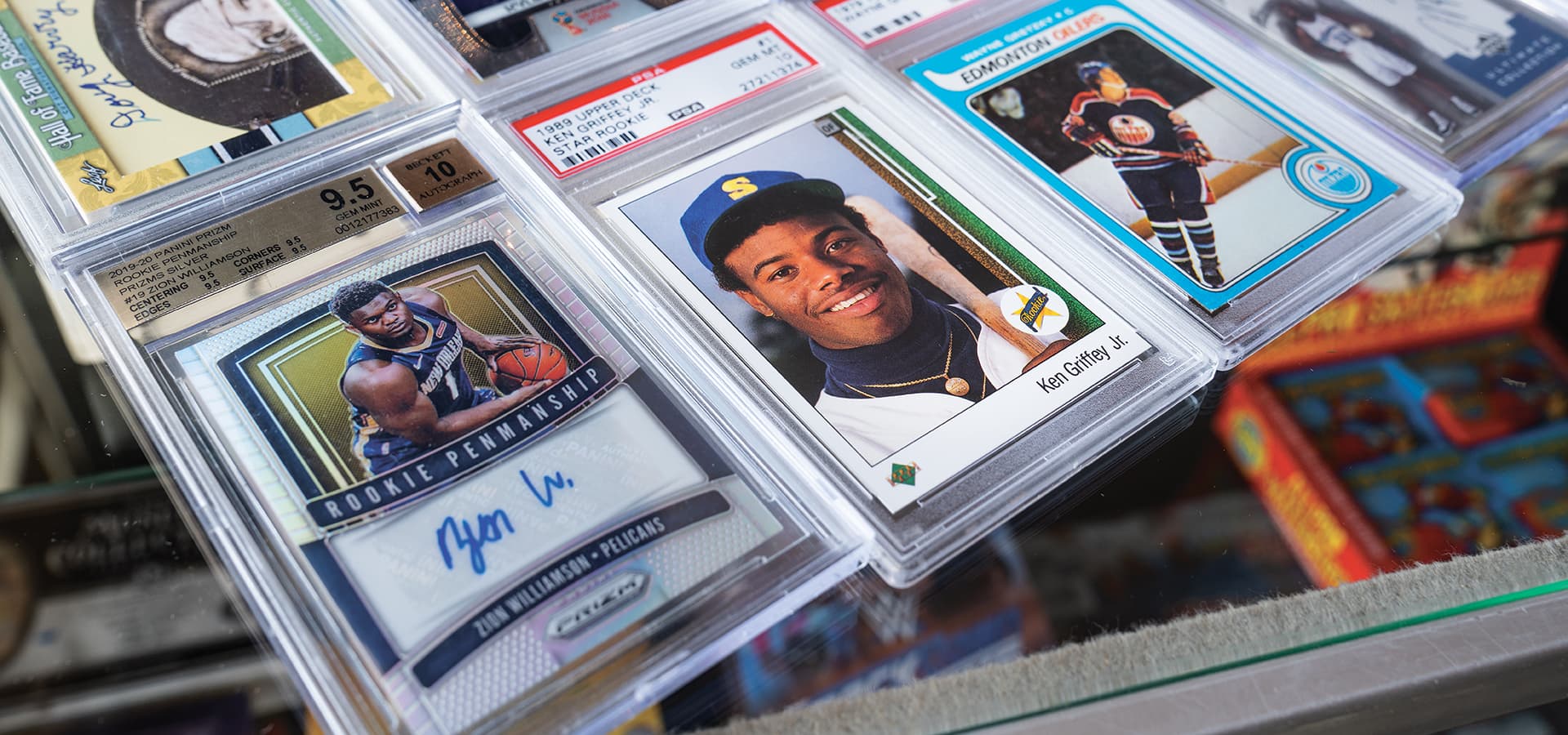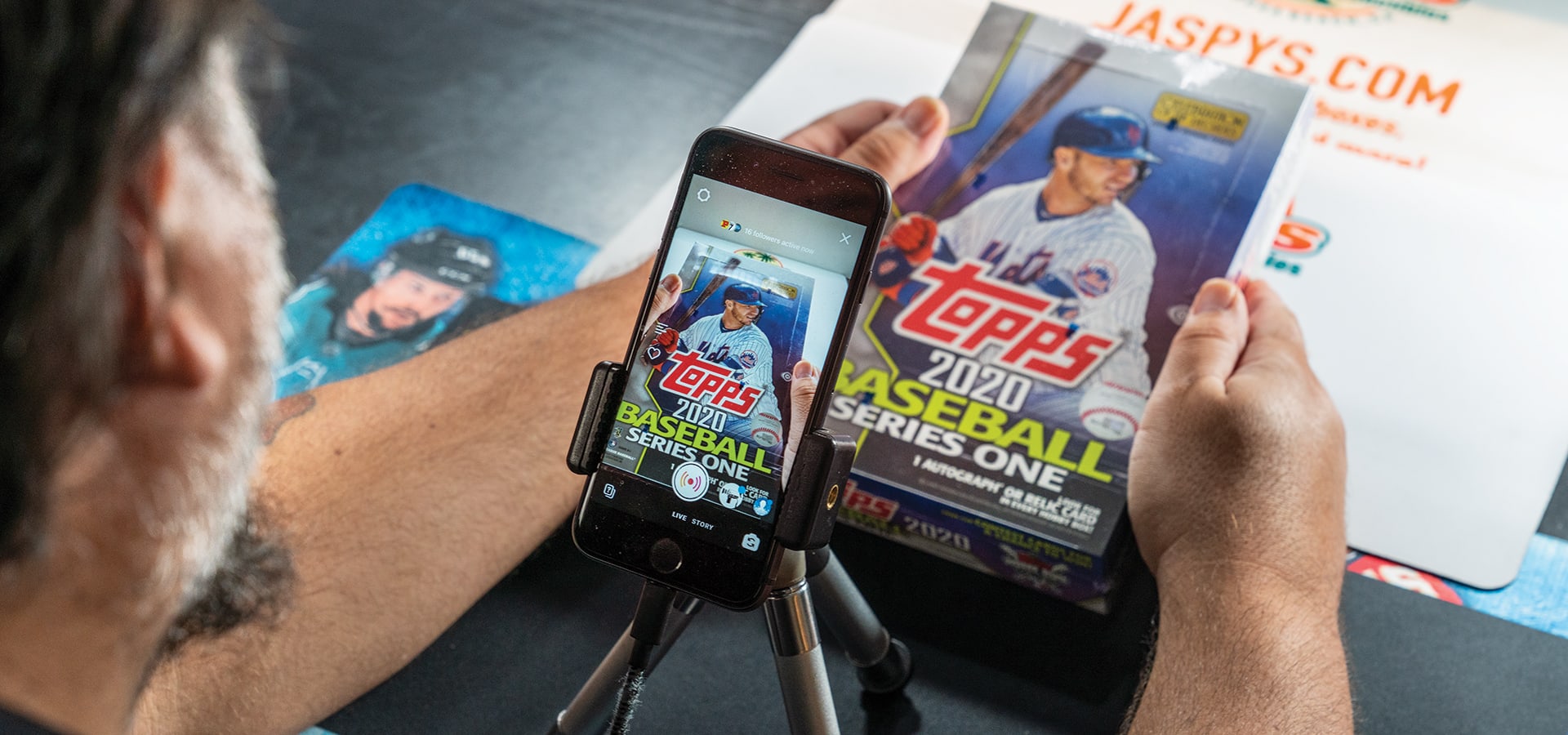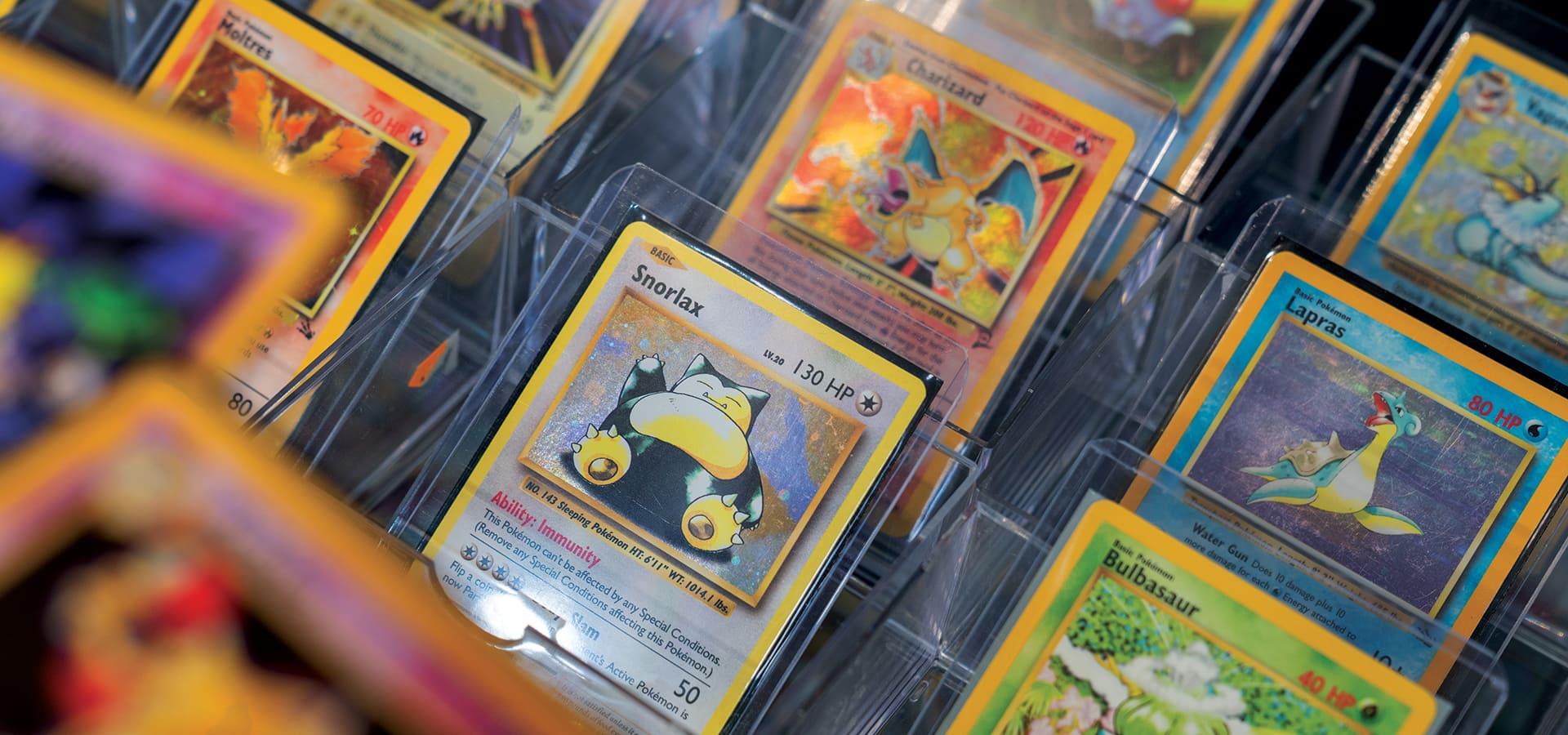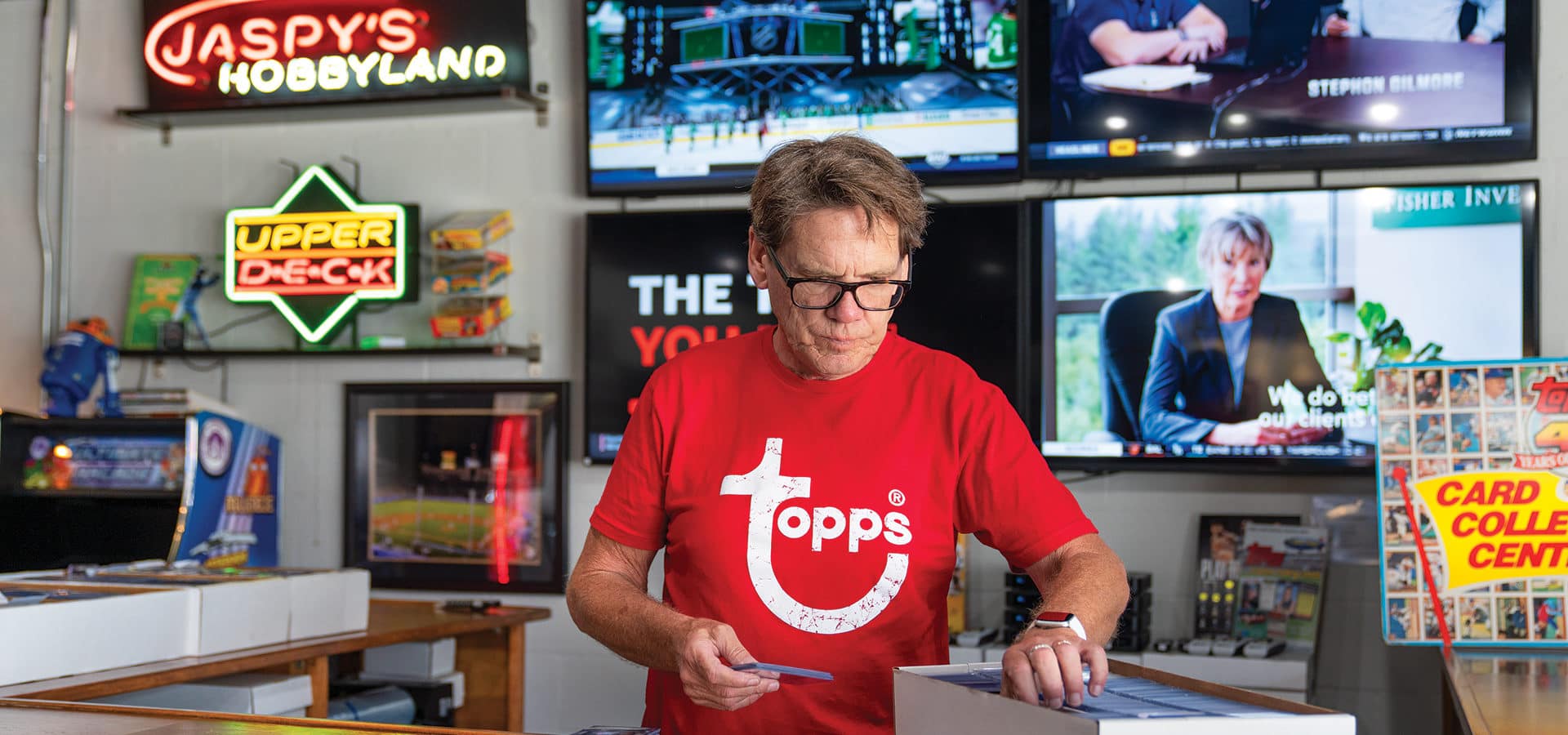The Jaspy’s Family of Case Breakers Are Feeding a New Generation of Collectors
Record breaking.
- CategoryPeople
- Written byRich Thomas
- Photographed byShane O’Donnell
Mike Jaspersen has been in the card business for 50 years, ever since he and his father—a collector since the early ’60s—traveled from Pennsylvania to Brea, California, for a trade show. With all the stock he’d amassed from years of collecting, Mike opened his first card shop in Long Beach in 1982. Just over 30 years later, Jaspy’s HobbyLand came to the South Bay, setting up shop in an 800-square-foot spot in Redondo’s Information Technology Center.

The current location in Hermosa, three times the size and now known as Jaspy’s Sports Cards & Collectibles, features an expansive showroom where singles, boxes and other memorabilia can be purchased. But the real action is happening in the three side rooms, where card cases are “broken” seven nights a week.
“I went to my first National Sports Collectors Convention in 2010, and that was when I officially knew I wanted to follow in the footsteps of my dad and grandfather.”
The phenomenon known as breaking began in the mid-2000s and was a way for collectors to target specific players or teams without assuming the full price of a case or amassing undesirable common cards. Entrants buy one or multiple spots in a group break—the prices on par with the potential value of the “hits” that can be obtained. You can either select your team or join a break where teams are assigned randomly.
The breaker then unseals the packs and pulls the cards live while collectors stay glued to their computer screen, hoping for a big payday. It’s a far cry from the early days of collecting, where $25 bought you a box of wax packs filled with stale bubble gum and very few cards of actual value.

“Between ’87 and ’94, the card companies printed a ton of cards—tens of thousands of cases,” says Mike, who worked for trading card titan Topps for 14 years. “They were mainly cardboard, not a lot of autographs or relics. Then about five years ago the prices really started shifting. All of a sudden you had hundreds of cases being broken every day and the cards are pulled right away, so the product is a hit or a miss as soon as it hits the internet. The quality got very high, and the card companies curtailed their production and loaded the products. That’s why the prices are going so high now.”
How high? Upon initial release, a 24-pack box of 2018–2019 Panini Prizm Basketball featuring a coveted Luka Dončić rookie card could be obtained for $700. Now that box fetches as much as $4,000 on the secondary market. Last December, a Jaspy’s customer dropped $60 to get in on a case break of hockey cards and ended up with a 2015–2016 Connor McDavid. The card recently sold at auction for $135,000. For many, getting into a break—and hopefully hitting on some gold—is the only way to obtain hot cards for marquee players.

While the pandemic has crippled many businesses, numbers at Jaspy’s—from views to transactions—have skyrocketed. The big case breaks go down on the Jaspy’s YouTube channel, but it isn’t rare to fire up Instagram and see 40 people tuning into a personal box break at 3 a.m.
“I liken it to the ’80s when the Home Shopping Network became popular,” says Mike. “Insomniacs were getting up at 2 a.m. and buying crazy things on TV.”
The audience of Jaspy’s runs the gamut from teenagers who log on to watch the action (but rarely participate) to 20- and 30-somethings hoping to make a quick buck on the secondary market. The strongest demo is the 30-to-50 range—usually old-school collectors who may have fallen away from the hobby but are drawn to today’s high-risk, high-reward action.
“I went to my first National Sports Collectors Convention in 2010, and that was when I officially knew I wanted to follow in the footsteps of my dad and grandfather,” says Nick Jaspersen, who co-owns the business with his father. “We now have 14 employees and are growing by the day. It feels great to carry on the tradition of being in the baseball card industry, and I know the ins and outs more than anyone thanks to the great lessons I have learned from my dad.”
Southbay ‘s Annual Spring Style Guide Has the Latest Fashion Trends, Jewelry, Home Goods and Gifts!
Shop local and support our amazing businesses.









